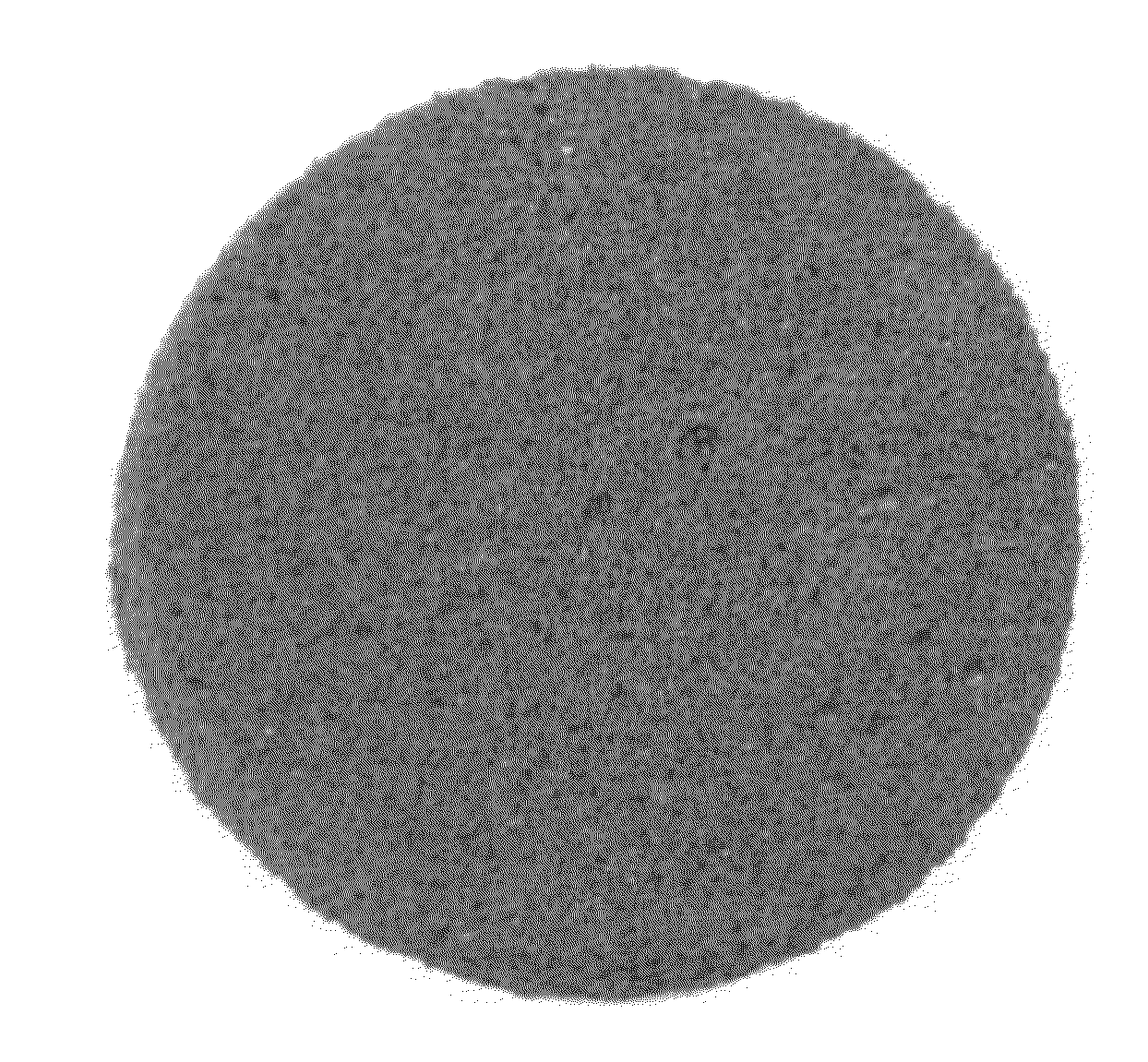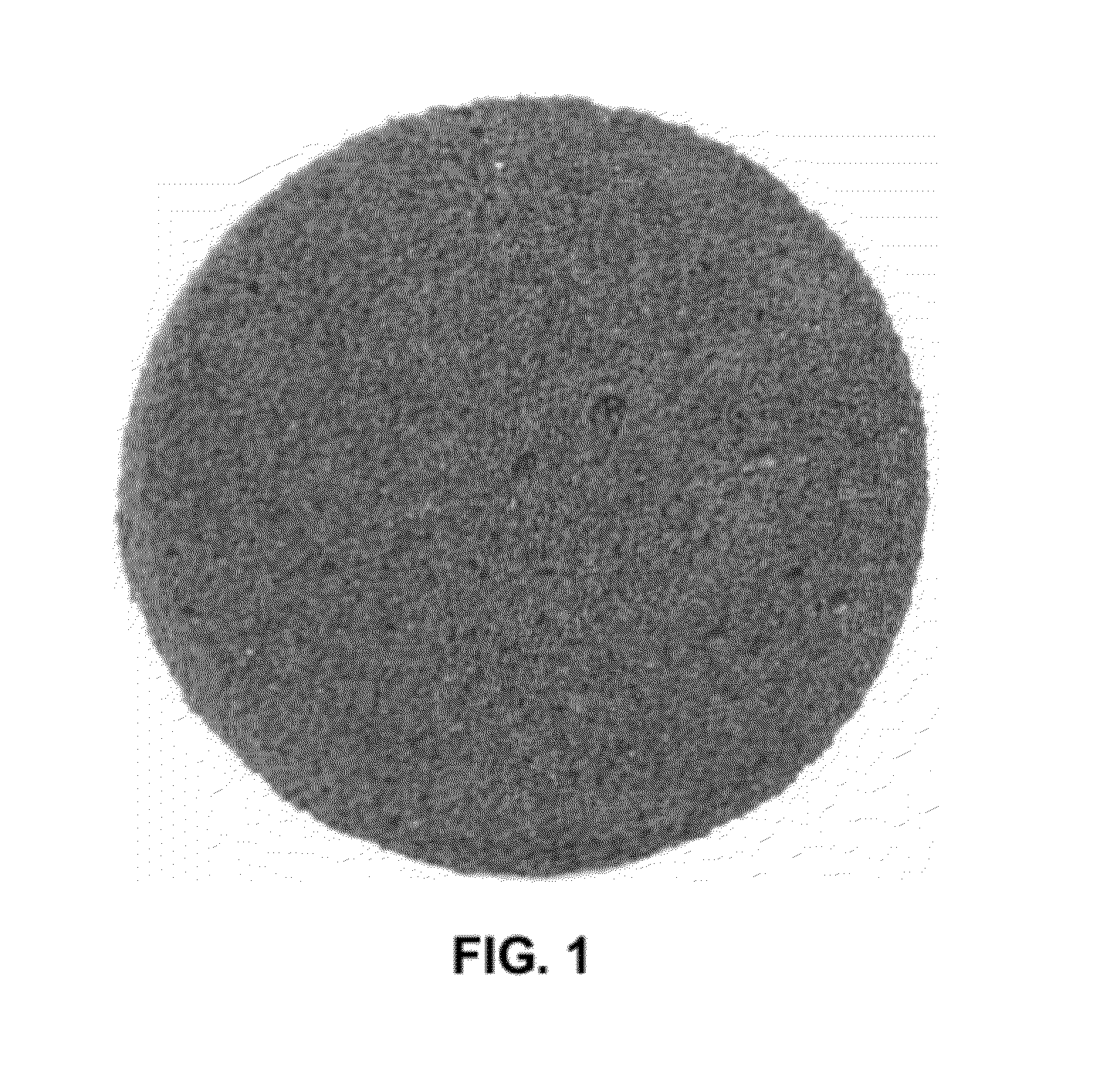High Temperature Crosslinked Polysulfones Used for Downhole Devices
a crosslinked polysulfone, high temperature technology, applied in the direction of sealing/packing, wellbore/well accessories, lighting and heating equipment, etc., can solve the problems of requiring additional chemical reaction steps involving expensive chemicals and solvents, prone to creep under load, and their limits of application
- Summary
- Abstract
- Description
- Claims
- Application Information
AI Technical Summary
Benefits of technology
Problems solved by technology
Method used
Image
Examples
example 1
[0021]One version of the process involves using commercially available fine polysulfone powders such as UDEL® P-1800 from Solvay Chemicals, Inc. In one non-limiting embodiment, these polysulfone powders were mixed with liquid one-component thermally degradable polyether polyurethane prepolymer such as DESMODUR™ E-28 from Bayer Corporation. A small amount of water was added and the mixture started to foam. The water was functioning as a blowing agent. The mixture was then transferred into a mold of cylinder shape, followed by curing overnight at 110° C. (pre-heating). After being de-molded, the material was sliced into discs, followed by high temperature treatment (curing) at 250° C. for two days.
[0022]At high temperature, at least 350° C. or above, the polysulfone powders are fused on polyurethane foam cells forming porous materials while the polyurethane itself is decomposed. In one non-restrictive version the combination between polysulfone powder and polyurethane resin was close ...
example 2
[0025]In another non-limiting embodiment, thermal cross-linkable sulfone polymer was made from the commercially available polyphenylsulfone powder obtained from company Solvay Plastics under commercial name as RADEL® R and magnesium peroxide at the percent from 0.5 to 5% of the total polysulfone powder by weight. This material in powder form was blended with a powdered salt, in one case sodium chloride, followed by compression inside tubular mold.
[0026]The mixture or material was pre-heated at 120° C. and then cured at 375° C. to form a dense disc. This material was then boiled in water in the pressurized or compressed container. The salt was removed by boiling it off. While it is not necessary that the salt removal be conducted under pressure, it speeds up the salt removal process. After all the salt was removed, the material was very open and porous. Differential pressure through open flow test was measured as 0.06 psi (0.4 kPa). This cross-linked porous polyethersulfone showed go...
PUM
| Property | Measurement | Unit |
|---|---|---|
| temperature | aaaaa | aaaaa |
| time period | aaaaa | aaaaa |
| temperature | aaaaa | aaaaa |
Abstract
Description
Claims
Application Information
 Login to View More
Login to View More - R&D
- Intellectual Property
- Life Sciences
- Materials
- Tech Scout
- Unparalleled Data Quality
- Higher Quality Content
- 60% Fewer Hallucinations
Browse by: Latest US Patents, China's latest patents, Technical Efficacy Thesaurus, Application Domain, Technology Topic, Popular Technical Reports.
© 2025 PatSnap. All rights reserved.Legal|Privacy policy|Modern Slavery Act Transparency Statement|Sitemap|About US| Contact US: help@patsnap.com


